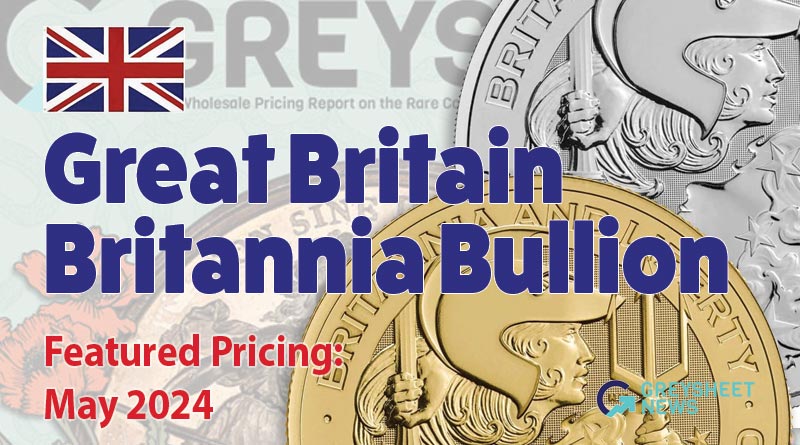PRESS RELEASE: Heritage Catalogers Discover Truth About Long Held Variety
Bass-Dannreuther Die State a/”c.” The middle of the Capped Head series offers a trio of scarce-to-rare 1818 half eagles, including two of the most famous reverse die blunders of the entire half eagle series. The popular STATESOF variety (BD-2) attracts much of the attention, although the equally interesting BD-3 die marriage, with its overpunched denomination, is arguably the greater challenge for half eagle specialists.
Each 1818 variety features a monogamous die pair, with prominent obverse and reverse die characteristics readily apparent on both sides. The rare BD-1 displays a “normal” obverse and reverse, with the obverse stars each struck from John Reich’s well-known notched star punch, utilized after Reich left the Mint the previous April. The BD-2 die marriage is slightly more plentiful, and shows star 13 far from the curl and date, paired with the STATESOF reverse. The present BD-3 coin has star 13 distinctly closer to the date beneath the curl, with the denomination clearly overpunched, visible to the unaided eye. It is approximately three times scarcer than the BD-2 STATESOF variety, and the rarest among the 1818 fives.
Most references cite the Chapman brothers May, 1906 sale of the Harlan P. Smith Collection as the first documented appearance of the BD-3 variety. Soon after, the variety was largely ignored until “rediscovered” as lot 748 of the New Netherlands 54th Catalog of United States and Canadian Coins in April, 1960.
Our research suggests that the 1818 varieties were known by the early 1880s-far earlier than most present-day researchers have noted, and once identified, the die pairs were sought by specialists who knew the series.
John Colvin Randall and John W. Haseltine collaborated on variety research around 1880, a relationship that dissolved in 1881 when Haseltine published his Type Table Catalogue without Randall’s knowledge or approval. H.P. Smith was quick to take note, utilizing Haseltine’s Type Table in his Coins and Medals sale (H.P. Smith, July, 1882). Shortly thereafter, references to 1818 half eagle varieties started to appear in print. Haseltine’s 69th Sale (June, 1883) is a case in point, where two 1818 half eagles were listed consecutively as lots 352 and 353, confirming that at least two of the three die pairs were known:

Randall himself consigned two 1818 varieties to Woodward’s sale of June, 1885, noting the two 1818 varieties simply as No. 1 and No. 2.

H.P. Smith simultaneously described 1818 varieties in his June, 1885 sale of the Douglas Collection:

Early catalog descriptions keyed on the position of the obverse stars with little notice of the reverse diagnostics. To our knowledge, the first reference to an 1818 half eagle described by the reverse die appeared in the New York Coin & Stamp’s sale of the famous Lorin Parmelee Collection. The sale was cataloged by H.P. Smith and his partner, David Proskey, and it is the earliest “in print” appearance of a BD-3 example noting the repunched denomination (fully 16 years before the oft-cited 1906 H.P. Smith Collection description). H.P. Smith himself was certainly aware of the variety, but perhaps it was the studious Proskey who documented the reverse anomaly:

We made an unexpected discovery (maybe flabbergasting is a better word) when researching the
present coin for this catalog. The Parmalee auction, followed by the H.P. Smith Collection sale, and all of the analysis and auctions that have followed-from H.P. Smith, to Walter Breen, to the modern-day references-all describe the denomination as 5D over 50, a misnomer that originated 127 years ago and continues to this day.
But clearly, the 5 is not repunched, and no D was cut over the 0. Rather, the incorrect 0 was modified
with an overpunched “I” to create the illusion of a “D”-a bit of diesinking slight-of-hand that has
hoodwinked all who have studied the variety for decades.
It is amazing such interesting overpunching could go unnoticed for so long. It seems to be a case of
“numismatic pareidolia,” wherein the mind perceives a familiar image or pattern of something, but
reality is actually something quite different. Here, the 0 was left intact, and a carefully positioned I superimposed to create the illusion of a D. No one ever noticed.
We consulted die expert Ron Landis, who explains the process succinctly:
My take is that the die sinker originally used the O punch instead of the D. To correct the mistake, he just used the I punch to add in the stem of the D, instead of trying to make the D punch work-which would most likely have caused some messy doubling. Quite a clever fix that saved them from scrapping the entire die.

The present Select Uncirculated coin is lustrous and sharply struck with only nominal rounding of the eagle’s claws. Vibrant, brassy-gold color flashes green and pale-orange highlights. Only a few tiny marks barely disturb the smooth, frosted surfaces. Struck from a later state of the dies than listed in the Bass- Dannreuther reference, with light die cracks that course through the reverse legend, accompanied by die clashing on both sides. This example displays Condition Census quality with tremendous eye appeal, housed in a PCGS holder with the light-blue insert and barcode on the back (a 1998-2002 generation holder).

Download the Greysheet app for access to pricing, news, events and your subscriptions.
Source: CDN Publishing











Please sign in or register to leave a comment.
Your identity will be restricted to first name/last initial, or a user ID you create.
Comment
Comments